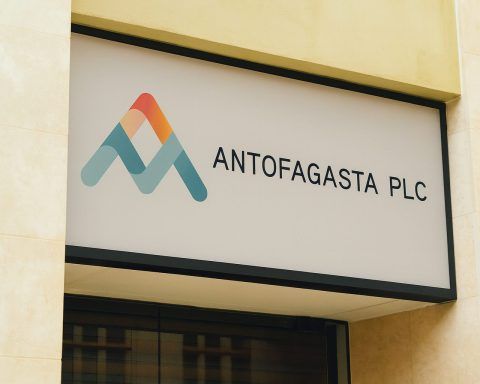Grab Holdings Limited (NASDAQ: GRAB) heads into the weekend trading near the lower half of its 52‑week range, even after reporting strong double‑digit revenue growth and raising full‑year guidance earlier this month. As of today, Saturday, November 22, 2025, the latest full trading session for GRAB was Friday’s close in New York, giving investors a clear snapshot of where sentiment stands post‑earnings.
This article looks at today’s GRAB stock price context, the latest Q3 2025 results, valuation metrics, analyst targets, and the key catalysts to watch in the weeks ahead.Grab (GRAB) stock price today
U.S. markets are closed for the weekend, so the latest data comes from Friday, November 21, 2025:
- Last close:$4.90, down about 1.6% on the day
- After-hours quote: roughly $4.95
- Intraday range:$4.82 – $5.06
- Volume: around 72.8 million shares, above an average daily volume in the mid‑50 million range
- 52‑week range:$3.36 – $6.62 [1]
That leaves GRAB trading roughly 25–30% below its 52‑week high, but still comfortably above the 52‑week low.
Recent performance has been choppy:
- Over the past month, GRAB has slipped by around 12–13%, reflecting a broader pullback in Southeast Asian tech and high‑growth names. [2]
- Over roughly the last 12 months, the stock is close to flat with a small negative return in the low single digits, depending on the exact measurement window. [3]
Earlier in the year, articles tracking the stock noted that GRAB had been up around 25–30% year‑to‑date at one point before the current consolidation set in. [4]
In short, 2025 has been a “rally then reset” year for Grab: the share price ran ahead of fundamentals early in the year and is now digesting a wave of new earnings and guidance.
Why GRAB stock came under pressure after Q3 2025 earnings
On November 4, 2025, Grab reported Q3 2025 results that, on the surface, looked very strong:
- Revenue:$873 million, up 22% year‑over‑year (+17% on a constant‑currency basis)
- On‑Demand GMV (Mobility + Deliveries):$5.8 billion, up 24% YoY
- Deliveries revenue:$465 million, up 23% YoY
- Mobility revenue: grew 17% YoY
- Financial Services revenue:$90 million, up 39% YoY [5]
Profitability metrics also moved in the right direction:
- Adjusted EBITDA:$136 million, up 51% YoY
- Profit for the quarter:$17 million, only a modest improvement from a year earlier
- Trailing 12‑month Adjusted Free Cash Flow:$283 million [6]
Crucially, Grab raised full‑year 2025 guidance:
- Revenue guidance lifted to $3.38–3.40 billion (from $3.33–3.40 billion)
- Adjusted EBITDA guidance raised to $490–500 million (from $460–480 million) [7]
So why did the stock fall?
- Earnings miss vs expectations
While revenue edged past consensus, earnings per share were softer. Data from MarketBeat and other outlets show Grab reported EPS of $0.01 vs about $0.03 expected, an earnings miss that overshadowed the top‑line beat for many traders. [8] - Market reaction was sharp and immediate
On the day after the results, GRAB shares slid roughly 9% as investors reacted to the profit shortfall and the still‑heavy investment in lending and digital banking. [9] - Losing streak and near‑term sentiment
Subsequent sessions saw a multi‑day losing streak, with the stock trading around $5.09 at one point this week—near its lowest levels since early September—before finishing Friday just under $5. [10] - Cash outflows from banking and lending
Grab’s Q3 release highlighted that net cash used in operating activities increased year‑on‑year, largely because of higher cash outflows related to its banking deposits and lending businesses, even though adjusted free cash flow improved. That mix of accounting profit + positive adjusted FCF + higher “real” cash outflows is nuanced and makes some investors cautious. [11]
Put simply: the market wanted a cleaner earnings beat and clearer cash‑flow visibility. Instead, it got strong growth, a guidance lift—but also an EPS miss and more evidence that digital banking is still an investment phase.
Fundamentals: a fast‑growing super‑app still in investment mode
Behind the share price volatility, Grab’s operating metrics tell a story of broad‑based growth across mobility, deliveries, and fintech.
Key Q3 2025 highlights from the company’s own disclosures:
- On‑Demand GMV up 24% YoY to $5.8B, as both ride‑hailing and food/grocery orders continued to scale. [12]
- Deliveries segment
- Revenue: $465M, +23% YoY
- GMV: $3.73B, +26% YoY
- Segment adjusted EBITDA margin improved as advertising revenue and operating leverage increased. [13]
- Mobility segment
- GMV: $2.04B, +20% YoY
- Revenue up 17% YoY
- Driver earnings improved even as average fares fell, thanks to better utilisation. [14]
- Financial Services (GrabFin + digital banks)
- Revenue: $90M, +39% YoY
- Loans disbursed grew 56% YoY to $886M; the loan portfolio reached $821M
- Segment still loss‑making (segment Adjusted EBITDA around ‑$28M), but management reiterated a target of segment breakeven by H2 2026. [15]
On the balance‑sheet side, Grab emphasised its large cash cushion:
- Gross cash liquidity: about $7.4B
- Net cash liquidity: about $5.3B at the end of Q3 2025 [16]
Combined with trailing revenue of roughly $3.23B and net income of about $122M over the last 12 months, that positions Grab as a rare Southeast Asian tech name that is both high‑growth and now modestly profitable at the group level, yet still investing heavily in fintech and autonomous‑driving bets. [17]
Valuation check: premium multiples despite the pullback
At Friday’s close around $4.90, Grab’s market capitalisation sits near $20 billion, based on approximately 4.1 billion shares outstanding. [18]
With trailing revenue of about $3.23B, that implies a price‑to‑sales (P/S) ratio a little over 6x. [19]
On earnings‑based metrics, Grab looks even more expensive:
- One data provider (Macrotrends) pegs Grab’s trailing P/E around 132x as of November 21, 2025. [20]
- Others (Public.com and YCharts) place the P/E in the 160–170x range based on recent prices and TTM EPS. [21]
- Some sources using different earnings definitions or time windows suggest multiples above 200x. [22]
The exact number varies with methodology, but the conclusion is the same: GRAB trades on a very rich earnings multiple, largely because:
- Profits are still small relative to revenue, so even a modest net income spread over billions of shares produces a tiny EPS.
- The market is still pricing in years of margin expansion and growth, especially in digital banking and financial services.
For valuation‑focused investors, the key question is whether Grab can grow into these multiples before competitive, regulatory, or macro headwinds bite.
What Wall Street analysts are saying about GRAB
Despite the post‑earnings wobble, sell‑side sentiment remains broadly constructive:
- A recent MarketBeat summary lists GRAB with a “Moderate Buy” consensus, split between 5 Buy and 5 Hold ratings, and a consensus price target of about $6.25. [23]
- StockAnalysis aggregates 8 analysts with an overall “Buy” rating and a 12‑month target of $6.23, implying roughly 27% upside from Friday’s close. [24]
Several major brokers—including HSBC, Jefferies, Benchmark, and Mizuho—have published target prices around $6.20–$7.00, reflecting confidence in Grab’s ability to expand margins over the medium term, even if near‑term profit volatility persists. [25]
But analysts also flag risks:
- High valuation vs current earnings
- Execution risk in scaling digital banking and lending
- Intense competition in Southeast Asia from both local players and global platforms
So while the headline is “Buy with upside”, the nuance is that this is still a higher‑risk, execution‑sensitive growth story, not a low‑volatility compounder.
Strategic moves and news GRAB investors are watching
Beyond quarterly numbers, several strategic developments are shaping the GRAB narrative going into 2026.
1. Big bet on autonomous and remote driving
On November 10, 2025, Grab announced a $60 million investment in Vay Technology, a remote‑driving company, with the option to invest up to $350 million more if Vay hits revenue, expansion, and regulatory milestones. [26]
Grab’s management has repeatedly argued that the future of mobility in Southeast Asia will be “hybrid”—combining traditional driver‑partners with autonomous vehicles and remote‑driven cars. The Vay deal sits alongside:
- Plans to launch Ai.R, Grab’s first autonomous ride service in Singapore by early 2026
- A multi‑year partnership with May Mobility to integrate its autonomous driving technology (fleet management, routing, matching) into Grab’s ecosystem [27]
Investors are watching these moves as potential long‑term margin levers, but they also introduce capital‑intensive, long‑dated projects whose payoff will take years to fully evaluate.
2. Digital banks and GrabFin scaling rapidly
Grab’s Financial Services segment has turned into a major growth engine:
- Revenue up 39% YoY in Q3 2025
- Lending to ecosystem partners grew 56% YoY, with the loan book up 65% YoY
- Deposits at its digital banks in Singapore and Malaysia reached new highs, even after management dialled back deposit rates to manage funding costs [28]
Management continues to guide for segment Adjusted EBITDA breakeven in the second half of 2026, a key milestone that could materially change the market’s perception of GRAB’s earnings quality. [29]
3. Governance and upcoming AGM
Investor attention is also turning toward Grab’s Annual General Meeting 2025, scheduled for December 5, 2025, where shareholders may get fresh colour on capital allocation, M&A, and the outlook for 2026. [30]
Any commentary about further investments in AV, potential strategic deals in the region, or updates on digital‑banking profitability could act as near‑term catalysts for the stock.
Key things GRAB traders and investors will watch next week
As markets reopen, here are some of the practical markers likely to be on watchlists:
- Psychological price zone around $5.00
GRAB is hovering around a round‑number level that often acts as both technical and psychological support/resistance for short‑term traders. - Behaviour vs 52‑week range
With a range of $3.36–$6.62, traders will watch to see whether selling pressure pushes GRAB closer to its 52‑week low, or whether buyers step in ahead of the AGM and as the post‑earnings dust settles. [31] - Follow‑through on AV and fintech news
Any new disclosures around the Vay investment milestones, progress with May Mobility and Ai.R, or updated metrics from the digital banks could sway sentiment. - Broader risk appetite for growth stocks
Grab’s recent slide has also mirrored some weakness in global growth/tech names. If risk appetite improves or worsens, high‑beta names like GRAB may move more than the indices.
Is GRAB stock a buy, sell, or hold now?
Only you can decide whether GRAB fits your risk tolerance, time horizon, and portfolio goals, but it’s helpful to frame the debate.
The bull case in a nutshell
Supporters of the stock point to:
- Strong top‑line growth: 22% revenue growth and 24% on‑demand GMV growth in Q3, even in a choppy macro environment. [32]
- Improving profitability: Consistent Adjusted EBITDA growth and positive quarterly net income, alongside positive trailing adjusted free cash flow. [33]
- Super‑app ecosystem with high user engagement across rides, food, groceries, payments, and banking, which can drive cross‑sell and higher lifetime value. [34]
- Large addressable market in Southeast Asia as digital adoption for transport, food delivery, and finance continues to rise.
- Net cash balance sheet, giving management flexibility to invest in AV, fintech, and potential strategic deals. [35]
From this angle, the recent pullback is a potential “growth at a reasonable price” opportunity for long‑term investors who believe Grab can keep compounding revenue and expand margins.
The bear case in a nutshell
Skeptics, on the other hand, highlight:
- Very high valuation multiples, with trailing P/E ratios well into triple digits, even after the sell‑off. [36]
- Earnings and cash‑flow complexity, especially around digital banking and lending, where reported adjusted free cash flow can diverge from underlying operating cash dynamics. [37]
- Intense competition from local and regional players in ride‑hailing, food delivery, and fintech, which may keep incentives and marketing spend elevated. [38]
- Regulatory and execution risk around autonomous vehicles, digital banking, and any potential large‑scale M&A in the region. [39]
From this perspective, GRAB is still a “show‑me” story: investors may want clearer evidence of sustained, high‑quality profitability before paying up, especially after a strong early‑2025 rally.
Bottom line
As of today, November 22, 2025, GRAB stock sits around $4.90, well below its recent highs but still pricing in significant long‑term growth. Earnings momentum, raised guidance, and strategic bets on financial services and autonomous mobility make Grab one of the most closely watched names in Southeast Asian tech—yet its high valuation and post‑earnings volatility underline that this is not a low‑risk play. [40]
For readers considering GRAB, it’s sensible to:
- Review the full Q3 2025 earnings release and presentation
- Stress‑test your own growth and margin assumptions
- Decide whether you’re comfortable with short‑term swings in pursuit of a long‑term Southeast Asia super‑app thesis
Disclaimer: This article is for informational and educational purposes only and does not constitute financial advice, investment recommendation, or a solicitation to buy or sell any security. Always do your own research or consult a licensed financial adviser before making investment decisions.
References
1. stockanalysis.com, 2. simplywall.st, 3. www.investing.com, 4. stockanalysis.com, 5. www.grab.com, 6. www.grab.com, 7. www.grab.com, 8. www.marketbeat.com, 9. www.investing.com, 10. www.morningstar.com, 11. www.grab.com, 12. www.grab.com, 13. www.grab.com, 14. www.grab.com, 15. www.grab.com, 16. www.grab.com, 17. stockanalysis.com, 18. stockanalysis.com, 19. stockanalysis.com, 20. www.macrotrends.net, 21. public.com, 22. www.wisesheets.io, 23. www.marketbeat.com, 24. stockanalysis.com, 25. www.marketbeat.com, 26. www.reuters.com, 27. www.grab.com, 28. www.grab.com, 29. s205.q4cdn.com, 30. simplywall.st, 31. stockanalysis.com, 32. www.grab.com, 33. www.grab.com, 34. www.grab.com, 35. www.grab.com, 36. www.macrotrends.net, 37. www.grab.com, 38. www.reuters.com, 39. www.grab.com, 40. stockanalysis.com








